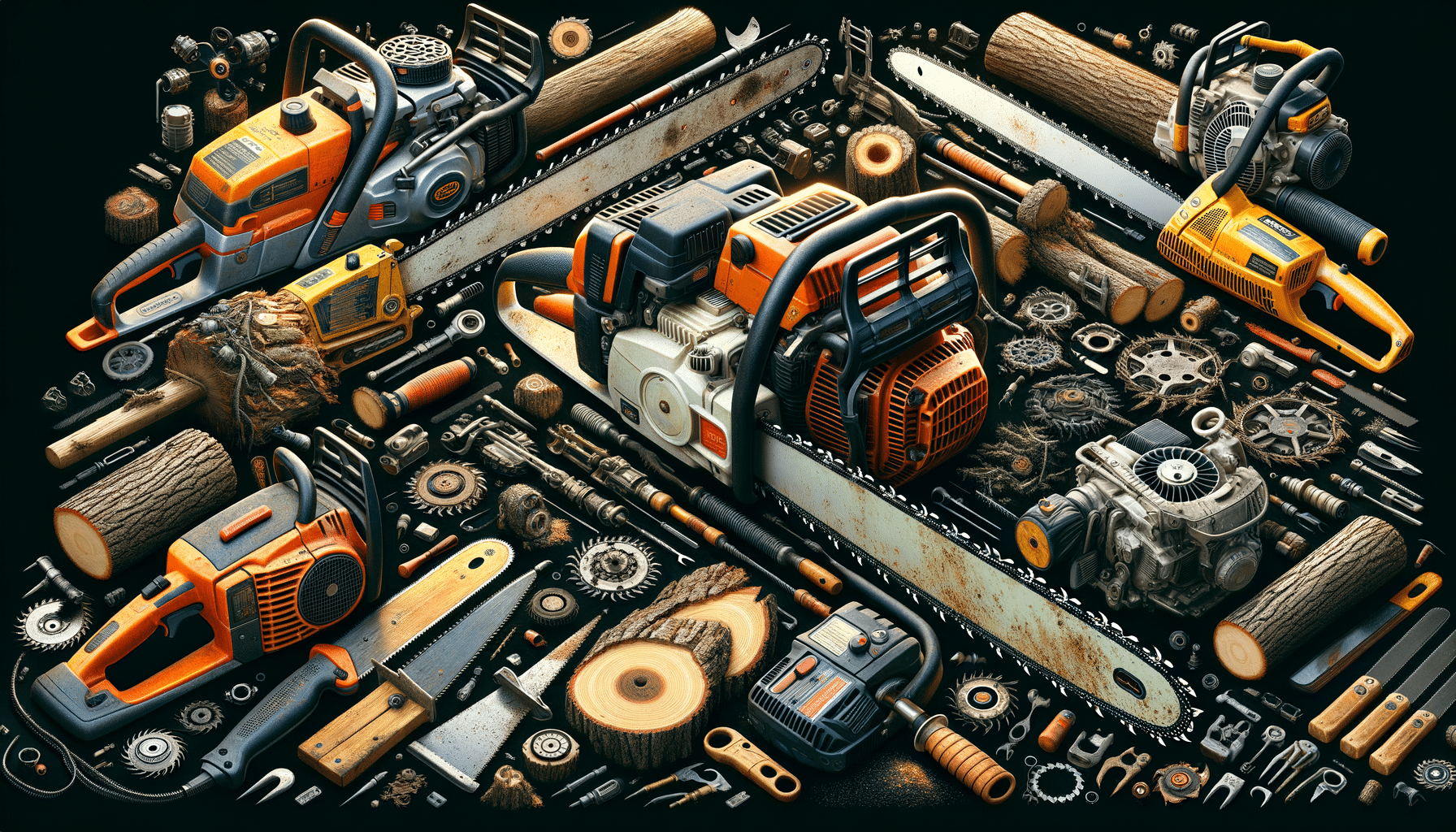Exploring the World of Chainsaws: A Comprehensive Guide
Chainsaws are essential tools for a variety of tasks, from forestry to home maintenance, offering power and efficiency in cutting through wood.

Introduction to Chainsaws
Chainsaws are powerful tools that have become indispensable in both professional forestry and household maintenance. They are designed to cut through wood with speed and precision, making tasks such as felling trees, trimming branches, and cutting firewood significantly easier. The versatility and efficiency of chainsaws have made them a crucial component in the toolkit of many users, from professional loggers to homeowners with extensive gardens.
Understanding the different types of chainsaws and their applications can help users select the right tool for their needs. This guide delves into the various aspects of chainsaws, offering insights into their operation, types, safety measures, and maintenance.
Types of Chainsaws: Gas vs. Electric
Chainsaws come in various types, each suited for different tasks and environments. The two primary categories are gas-powered and electric chainsaws.
Gas-powered chainsaws are renowned for their power and mobility. They are highly effective for heavy-duty tasks such as felling large trees and cutting thick logs. These chainsaws typically have a longer runtime and are preferred for outdoor tasks where electricity might not be readily available. However, they require regular maintenance, including fueling and oiling, and tend to be louder and heavier.
Electric chainsaws, on the other hand, are favored for their ease of use and maintenance. They are lighter and quieter, making them suitable for residential areas and small to medium-sized tasks. Electric chainsaws can be corded or battery-operated, with the latter offering more mobility. While they may not match the power of gas chainsaws, they are ideal for trimming, pruning, and light cutting jobs.
When choosing a chainsaw, consider the type of work, the frequency of use, and personal preferences regarding noise and maintenance.
Safety Measures When Using Chainsaws
Operating a chainsaw requires adherence to safety protocols to prevent accidents and injuries. Chainsaws are powerful machines, and mishandling them can lead to serious consequences.
Before using a chainsaw, ensure you have the appropriate protective gear. This includes:
- Helmet with a face shield or safety goggles
- Ear protection, especially for gas chainsaws
- Gloves with a good grip
- Chainsaw chaps or pants
- Steel-toed boots
Always inspect the chainsaw before use to ensure it is in good working condition. Check the chain tension, fuel levels (for gas chainsaws), and ensure the chain brake functions correctly.
When cutting, maintain a firm grip on the chainsaw and stand with your feet shoulder-width apart. Be aware of your surroundings and keep bystanders at a safe distance. Avoid cutting above shoulder height and be cautious of kickback, which occurs when the nose of the chainsaw bar strikes an object.
Maintenance Tips for Longevity
Proper maintenance is crucial for the longevity and performance of a chainsaw. Regular upkeep ensures the tool operates efficiently and safely.
For gas chainsaws, regular tasks include:
- Cleaning the air filter to prevent clogging
- Checking and replacing the spark plug as needed
- Ensuring the chain is sharp and correctly tensioned
- Lubricating the chain and bar to reduce friction
Electric chainsaws require less maintenance but still need attention. Keep the battery charged and inspect the cord for any damage if using a corded model. Regularly clean the chain and bar to prevent debris buildup.
Regardless of the type, always store the chainsaw in a dry place and follow the manufacturer’s guidelines for maintenance and storage.
Choosing the Right Chainsaw for Your Needs
Selecting the right chainsaw involves considering several factors, including the nature of the tasks, the frequency of use, and personal preferences.
For heavy-duty tasks and professional use, a gas-powered chainsaw with a longer bar length is often recommended. These models offer the power and durability needed for extensive cutting jobs.
For homeowners and occasional users, an electric chainsaw may suffice. They are easier to handle, require less maintenance, and are quieter, making them suitable for residential areas.
Additional features to consider include:
- Automatic chain oiler for consistent lubrication
- Tool-less chain adjustment for convenience
- Vibration reduction features for comfort
- Safety features like chain brakes and low-kickback chains
Ultimately, the right chainsaw is one that matches the user’s specific needs, ensuring efficiency and safety in every task.